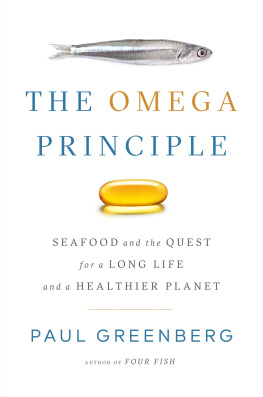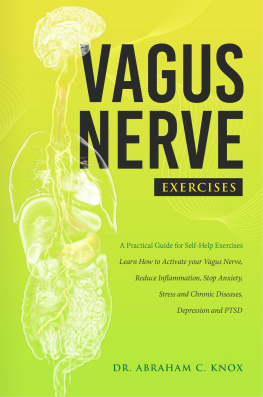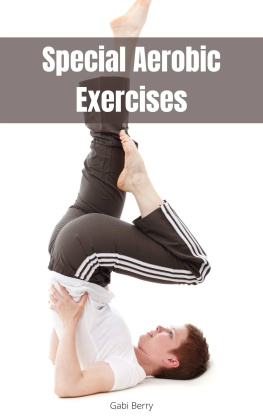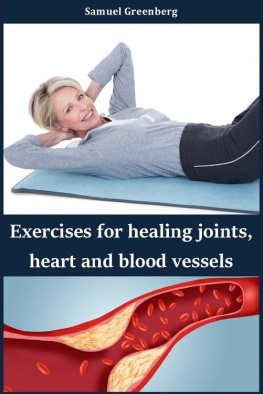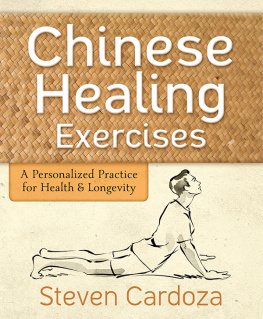Exercises for internal organs
Help your body quickly recover from cardiovascular, gastrointestinal, pulmonary, urinary and other diseases
Samuel Greenberg
Text Copyright 2020
Warning the author is not responsible for any undesirable consequences in case of the use of medical products without consultation with the doctor. Every attempt was made to provide accurate data. All information provided in this book does not replace medical advice.
Disclaimer notice:
Please note information in this book for educational purpose only.
Every attempt has been made to providing accurate and complete information. Readers recognize that creator is not participating in rendering legitimate, money related or proficient guidance.
By reading this book reader agrees that under no circumstances are the author is not responsible of direct or indirect loses as a result of using information in this book including - but not limited - any possible errors, omissions and inaccuracies.
Annotation
The book presents sets of therapeutic exercises that can be successfully used for treatment of various diseases. Heart exercises will strengthen the heart muscle, restore normal circulation, improve metabolism and help your body get rid of metabolic waste and toxins. Respiratory system exercises help eliminate or reduce respiratory insufficiency, develop chest mobility, and increase lung capacity. Special exercises will help restore the functioning of the stomach and intestines, strengthen the muscles of the anterior abdominal wall and improve blood circulation in the internal organs.
Table of contents :
Chapter 1. Introduction
Today, therapeutic exercises, which are based on the use of the main biological function of the body - movement, are increasingly popular and used in the treatment of various diseases. Specially designed exercises can not only improve the work of the sick organ, but also eliminate the existing violations in it. For example, the set of exercises for the heart strengthens the heart muscle and prepares it for a gradual increase in physical activity, restores normal circulation and improves metabolism.
In case of respiratory diseases, breathing exercises help to eliminate or reduce respiratory failure, developing the mobility of the chest and increasing the vital capacity of the lungs.
Remedial exercises are a good means of preventing and treating diseases of the gastrointestinal tract. Exercise correctly can help restore the function of the stomach and intestines, strengthen the muscles in the anterior abdominal wall, and improve blood circulation in the internal organs.
But, like any other remedy, therapeutic exercises require a doctor's consultation - it is he who must determine the level of load, taking into account the nature of the disease and the general condition of the patient.
Therapeutic exercises also have contraindications: you cannot do it during or after acute viral diseases, with oncology and some mental illnesses; in addition, there are limitations for each disease.
If the "go-ahead" to engage in therapeutic exercises has been received, you can safely begin to master it. It is only necessary to approach this matter quite responsibly and consciously: only systematic performance of special exercises in combination with an optimistic attitude can give a powerful positive effect.
Chapter 2. Healing exercises for the cardiovascular system
Exercise has an important place in the treatment and prevention of cardiovascular diseases.
As a result of therapeutic exercises, the heart muscle is strengthened, its contraction capacity is increased, blood circulation, including peripheral ones, is increased. Good blood flow, in turn, contributes to the mechanical massage of the walls of vessels, which make them more elastic. The level of cholesterol in the blood is reduced, and therefore the risk of formation inside the blood clots - blood clots. All these factors together inhibit the development of atherosclerotic changes in the body, which is the main cause of heart ailments.
The intensity of training depends on the patient's condition, so before you start classes, be sure to consult with your doctor! This is especially true for elderly and weakened people and those who have recently suffered a heart attack.
There are other rules in the implementation of treatment complexes, which should not be neglected:
Even if you feel good, you can't increase your physical activity dramatically and quickly.
Classes should start no earlier than 1.5-2 hours after meals.
Classes should be stopped immediately, if during them or after that there will be unpleasant feelings in the heart, dizziness, shortness of breath, heartbeat. If the pain does not go away by itself, it is necessary to take nitroglycerin and be sure to seek advice from a doctor!
Older people suffering from atherosclerosis with cervical osteochondritis are not recommended tilts "below the heart" to avoid the rush of blood to the head, rotational movements of the head and torso of a large amplitude, strength exercises with strain (difficult to drain the outflow of blood from the brain), exercises leading to concussion of the body (simulation of the body).
Never forget to keep track of your heart rate, which is very important during your workout.
It is believed that physical activities has a positive effect on the body, when by the end of the session the pulse increases by 20-35 beats, not exceeding 120 beats per minute, and after 3-5 minutes of rest returns to the original frequency.
The main task of rehabilitation of patients after heart attack is restoration of the cardiovascular system, improvement of exercise tolerance, lowering of blood cholesterol levels, lowering of blood pressure, and increasing psychological resistance to stress.
Part of the system of restorative therapy is physical therapy with a gradual and strictly controlled increase in the intensity of exercise.
All exercises need to be performed smoothly, rhythmically, alternating them with breathing exercises. The goal of physical training is to gradually increase the number of heartbeats to 100-120 per minute.
It should be remembered that during the period of rehabilitation after heart attack, each patient is assigned his own mode of physical activity; therefore, all additional physical activities must be approved by a doctor.
Set of healing exercises after a heart attack
Exercise 1
The starting position is standing, arms along the torso, legs at shoulder width. Raise your hands up with your palms outwards and stretch - inhale. Put your hands down, describing the circle with them, exhale. Go back to your original position. Repeat the exercise 4-6 times.
Exercise 2
The starting position is standing, hands on the belt, legs apart. Turn left, spread your arms to the sides - take a breath. Return to the original position - exhalation. Do the same the other way. Repeat 4-5 times.
Exercise 3
The starting position is standing, arms along the torso, legs at shoulder width. Take a breath. Sit, without lifting the heel from the floor, slightly leaning forward and taking your hands back - exhale. Go back to your original position - take a breath. Repeat 4-6 times.
Exercise 4
The starting position is the same. Take a breath. Sit down with your hands on your hips and exhale. Go back to your original position - take a breath. Repeat 3-4 times.
Exercise 5
The starting position is standing, hands on the belt, legs at shoulder width. Lean to the left with your right hand up, inhale (Fig. 1). Return to the original position - exhalation. Do the same the other way. Repeat 3-4 times.




